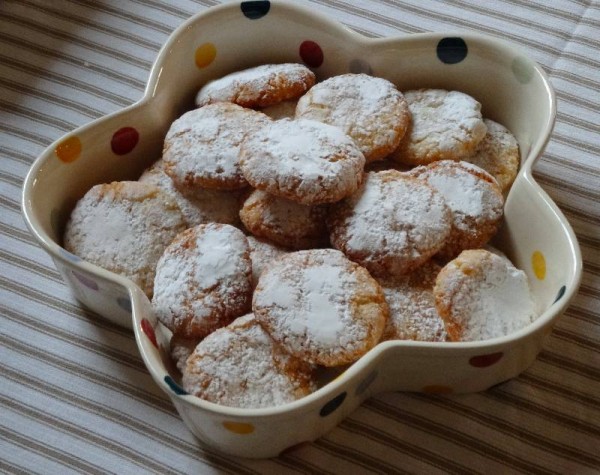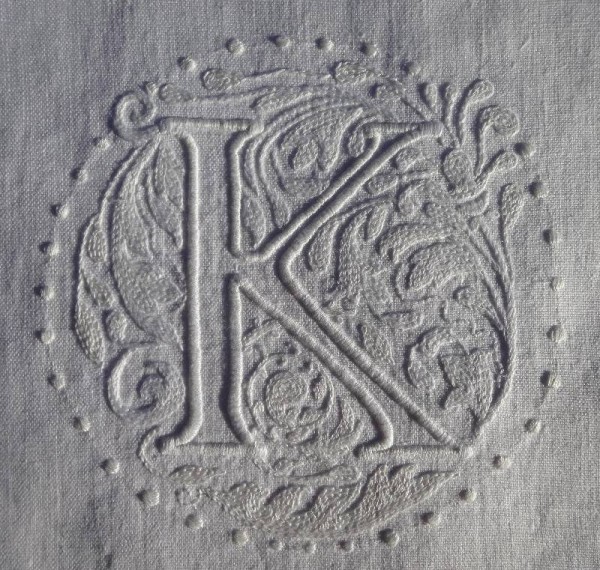
Whitework letter K in Renaissance style (hand embroidered by Mary Addison)
After all the hot, bright colours of my posts on Vietnamese crafts, it is time to return to the soothing lure of white on white. I would have had this finished before Christmas except that the design suddenly began to pull me in a direction I hadn’t anticipated and as time seemed to plummet down a black hole, the work was put to one side.
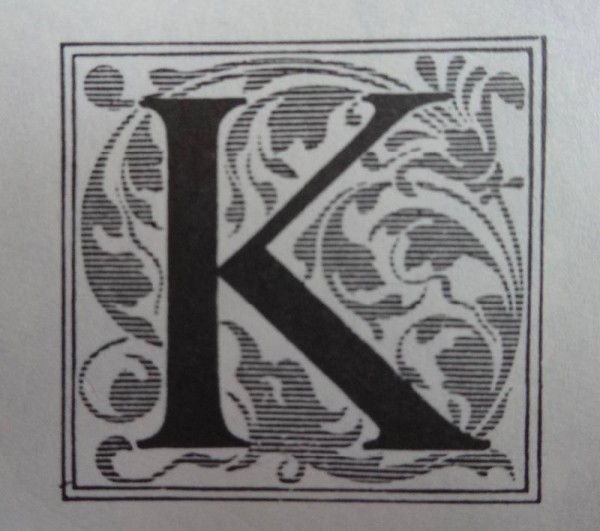
K from a C19th century German alphabet, after C16th Renaissance designs
(from Historic Alphabets and Initials: Woodcut and Ornamental; ed Grafton. Dover 1977)
I have long felt that I wanted to embroider a William Morris style capital letter but when I researched the subject further I realised that I didn’t want to do anything quite so chunky and heavy – I’ll save that for another time when I’ve set myself up with off white crewel wool and knobbly unbleached linen (there, now I’ve got myself really excited at the prospect). Meanwhile, one of my Dover books (Historic Alphabets and Initials: Woodcut and Ornamental; ed Carol Belanger Grafton. Dover 1977) came to the rescue and presented me with a lovely C19th German alphabet, which was itself based on C16th Renaissance models. Well, we’re all mongrels now and what was William Morris doing but trawling back through history to the early years of wood engraving and the model of William Caxton.
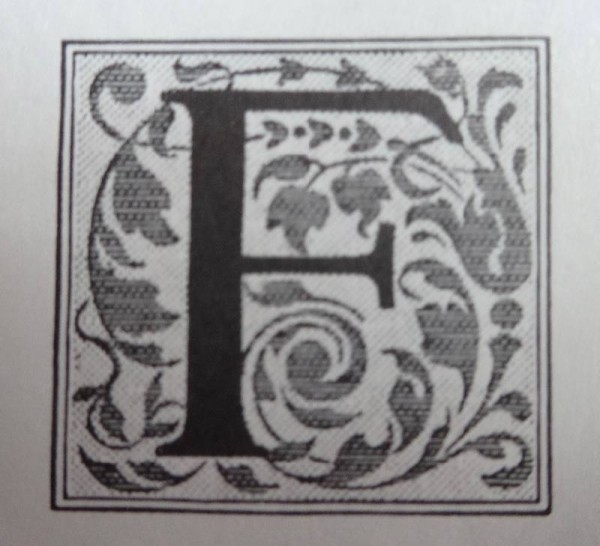
F from a C19th century German alphabet, after C16th Renaissance designs
(from Historic Alphabets and Initials: Woodcut and Ornamental; ed Grafton. Dover 1977)
I looked at the F and the K and then took from each the features I liked best. Then as I was nearing the end I realised I didn’t like the whole circle being enclosed in a square concept and decided to go all out for the circle. This involved a bit of additional embroidery in the form of the odd curving leaf and tendril and a final outer ring of embroidered dots to pull the design together without fencing it in.
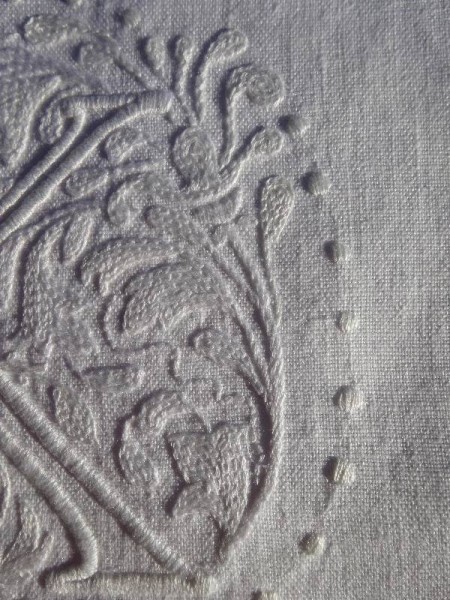
Whitework letter K: detail (hand embroidered by Mary Addison)
I used DMC Blanc on white linen and once again my not making a note of what I am sewing with has caused me problems. The 6 or so shades of white that I regularly use are all clearly distinguishable in daylight but at night even with a very good sewing light, they become indistinguishable. In fact this ended up not being a problem as I had only used the wrong thread on the outline of the K. Going over this with another layer of satin stitch was great as it gave the letter greater definition which I liked. I hope I’ve finally got the message that I must always make a note of which threads I’m using – in winter as I’m away from home Monday to Wednesday, I won’t even discover any mistake made on Sunday evening until Thursday morning and there are too many evening’s work to lose in that time.
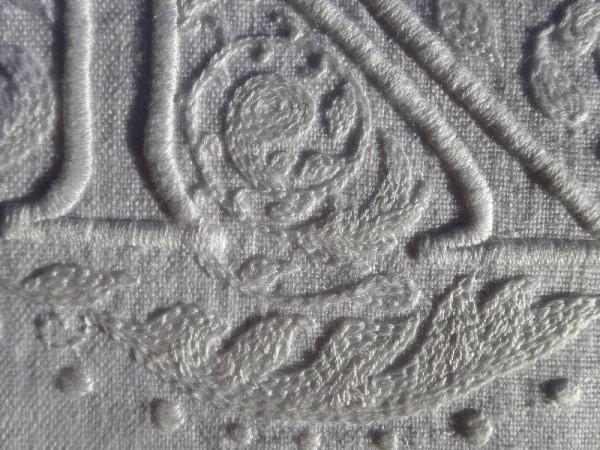
Whitework letter K: detail (hand embroidered by Mary Addison)
Stitches used: satin stitch for the letter K and the circle of dots; chain stitch for the flower and leaves. If the chain stitch were in wool rather than cotton it would be called crewel work. When I have made this up into a cushion, I shall add a picture of the finished item to this post.
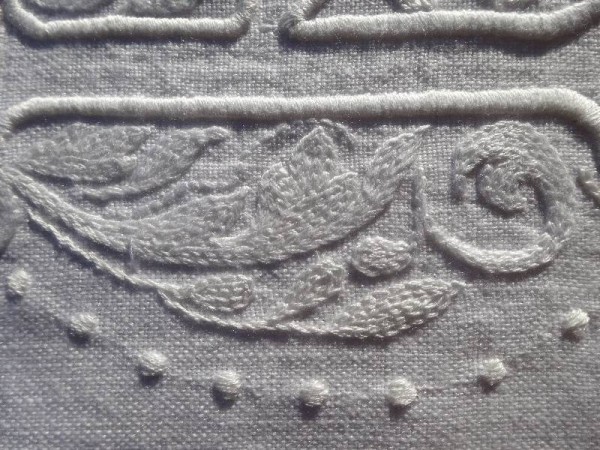
Whitework letter K: detail (hand embroidered by Mary Addison)
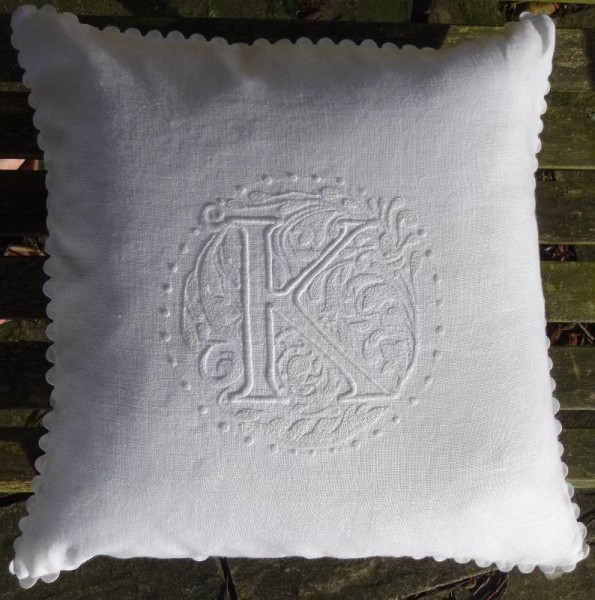
K monogram cushion in whitework: white embroidery thread on white linen (hand embroidered by Mary Addison)

